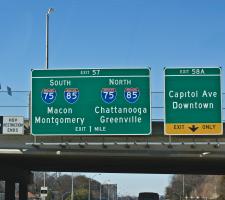
Jack Opiola talks to some
Cities will accommodate almost 60% of the world’s population by 2025 and technology is outpacing transportation plans and planners - putting extreme pressures upon planners and transportation systems alike. Big data, digital payments, ubiquitous communications, smartphone applications, on-demand travel and autonomous vehicles are all shredding existing transport plans. Never before has the pace of population growth and the tools to address this problem been so out of alignment.
Some European cities served by ‘hub and spoke’ transport networks are introducing innovative and ambitious, Mobility as a Service (MaaS) style, transportation schemes which combine available technology, collaborative public-private enterprises, open-data sharing and personalised transport services. Helsinki appears to be the thought leader and
MaaS aims to remove the ‘hassle and pain’ from planning and ticketing trips and facilitate the use of public transport. For instance, Whim combines public transport with a variety of options from participating private firms and can plan, ticket and pay for public transport services (bus, tram, train, metro…), car services (taxi, car-share, car hire...) and bike share services to get individuals to their destination. The account-based service will display the cost for each option (highlighting the trade-offs between speed, comfort and price), remember an individual’s preferences and help optimise trips. Users can find all the travel options in one place and buy one-off journeys or a mobile phone style ‘bundle’ of monthly travel. By encouraging the efficient use of public transport over private cars, MaaS is intended to free up road space, prevent gridlock, and remove the pain points from multi-modal journeys.
MaaS is a concept not lost in the United States where west coast San Francisco and Atlanta to the east are considering MaaS opportunities. However, Tilly Chang of the San Francisco County Transportation Agency and Chris Tomlinson of Georgia’s
Chang embraces the MaaS concept and cites Treasure Island, an island in San Francisco Bay serviced by the Bay Bridge, which is a focus of integrated transport with mobility options including bus, water taxi, cycling and private car.
With the city’s transportation infrastructure in maintenance/renewal mode, Chang believes a MaaS-based mobility management approach could unlock greater system performance with benefits for all. For the traveller, MaaS can help plan, book and pay for their trip, while information and analytics can provide multiple aspects of their trip (price, cost, reliability, calories burned, emissions footprint…). For the city, a publicly managed MaaS platform can inform a more efficient deployment of resources and enforce/uphold city standards while serving as a platform for marketing sustainable transportation options and facilitating demand management through pricing and rewards. And, for the service provider, the MaaS platform is a major channel to distribute their product/service, widening and targeting their reach.
Chang believes public sector-led initiatives are essential to catalyse early stage trials and learning and could be done by a city or regional government - or a private developer. In her view, a joint public/private trial would be preferable, as will happen on Treasure Island. In the early stages, research and development are key to learning and gaining public trust/acceptance, and that requires a joint venture between public and private players.
One issue she raises is that the blending of public and private efforts in the US is pale in comparison to the more centrally controlled public transport initiatives in Finland (and across Europe). Her department is working on a policy framework for local decision-makers regarding the evaluation of emerging mobility services and technologies and creating suitable criteria to measure performance and outcomes.
She believes the governance of MaaS, along with meeting equity, accessibility, congestion, pollution, and greenhouse gas emissions, are all important aspects of a trial. With input from industry and community stakeholders, the intent is to define the city’s expectations and create certainty for market entrants. However, she says many of the regulatory roles are held by the state and are permissive of great levels of innovation and experimentation by the private sector, without corresponding requirements for data and transparency.
This situation is mirrored at the federal level so the governance of MaaS and meeting congestion reduction and environmental policy objectives may be more difficult in the USA than in European countries.
Chang is also keen on the state’s recently completed Road Charging Pilot Program as it involves a key element applicable to MaaS - the establishing of personal transportation accounts responsible for planning, ticketing, payments and accountability. Currently, San Francisco is planning to explore the possibilities of implementing MaaS services with a host of partners and this will also include evaluating the strength of support for the concept in other Californian cities and the state’s central government.
There remains uncertainty about whether a distributed and independent set of public and private operators could provide a system-wide, account-based, collaborative program to manage demand on, for instance, Treasure Island.
While currently difficult in San Francisco’s decentralised transportation system, if California adopts road charging then the private account managers could also handle additional value-added services including public transport, parking, tolling and bike share through a single account. As with utility companies, account managers could be managed through a set of publicly administered incentives and overarching policy objectives.
Atlanta–based Tomlinson is also a proponent of the MaaS concept but due to the current reliance on the car, he believes the biggest obstacle to wider public acceptance is the ‘first mile’ of travel that can start from anywhere in the suburbs.
Once a person is comfortably seated in a car, connections to public transport become less attractive so he questions how public transport can adequately and cost-effectively service these suburban neighbourhoods to provide that first mile system. While dynamic ride sharing or carpooling can address multiple start points and provide connectivity to other public transport services, Tomlinson points out that this works better with trips to the urban centre. Journeys to dispersed destinations surrounding Atlanta, pose service difficulties to which the car may remain the best solution.
Tomlinson also highlights commuters’ time sensitivity as demonstrated by Georgia’s large and interconnected high-occupancy vehicle (HOV) lane network on which drivers voluntarily pay a toll to benefit from the reliability and time savings offered by these additional lanes. In contrast, public transport and multi-modal journeys suffer from interchange delays but do offer the possibility of reducing congestion.
His view is that people will choose time-savings. So, while HOV lanes may sway the decision to a car trip, a major highway crash could quickly change which mode(s) offer the shortest journey time. As such, MaaS applications could be the key to providing commuters with near real-time data so they can make informed decisions. Providing the ability to pay for the chosen mode(s), sweetens the pot further.
He points to the University of Georgia where students pay a fixed fee per semester for unlimited service to or from the Athens, Georgia campus - that approach has done much to reduce private car usage and provide adequate transport services for the students.
Tomlinson has concerns about government’s ability to manage account-based systems following his authority’s development of a smartphone app for tolling. The continual release of new smartphones and the ongoing software upgrades changed the authority’s thinking. “It was just not cost-effective for us to undertake this with our internal resources,” he admits. “We have now outsourced it to a company in the smartphone application business and it is in their benefit to keep the app and smartphone service up-to-date.”
While urban sprawl favours the private car, Tomlinson considers Atlanta’s projected growth and increasing congestion when he predicts that the travelling public will demand better integrated transport services, including tolling and other car related services such as ride sharing.
Despite their reservations, both Chang and Tomlinson see MaaS as a natural extension of integrated transport, smart cities, and other transportation initiatives. Both believe mobility services will be launched in America, albeit more car-centric hybrids of those deployed in Europe.






